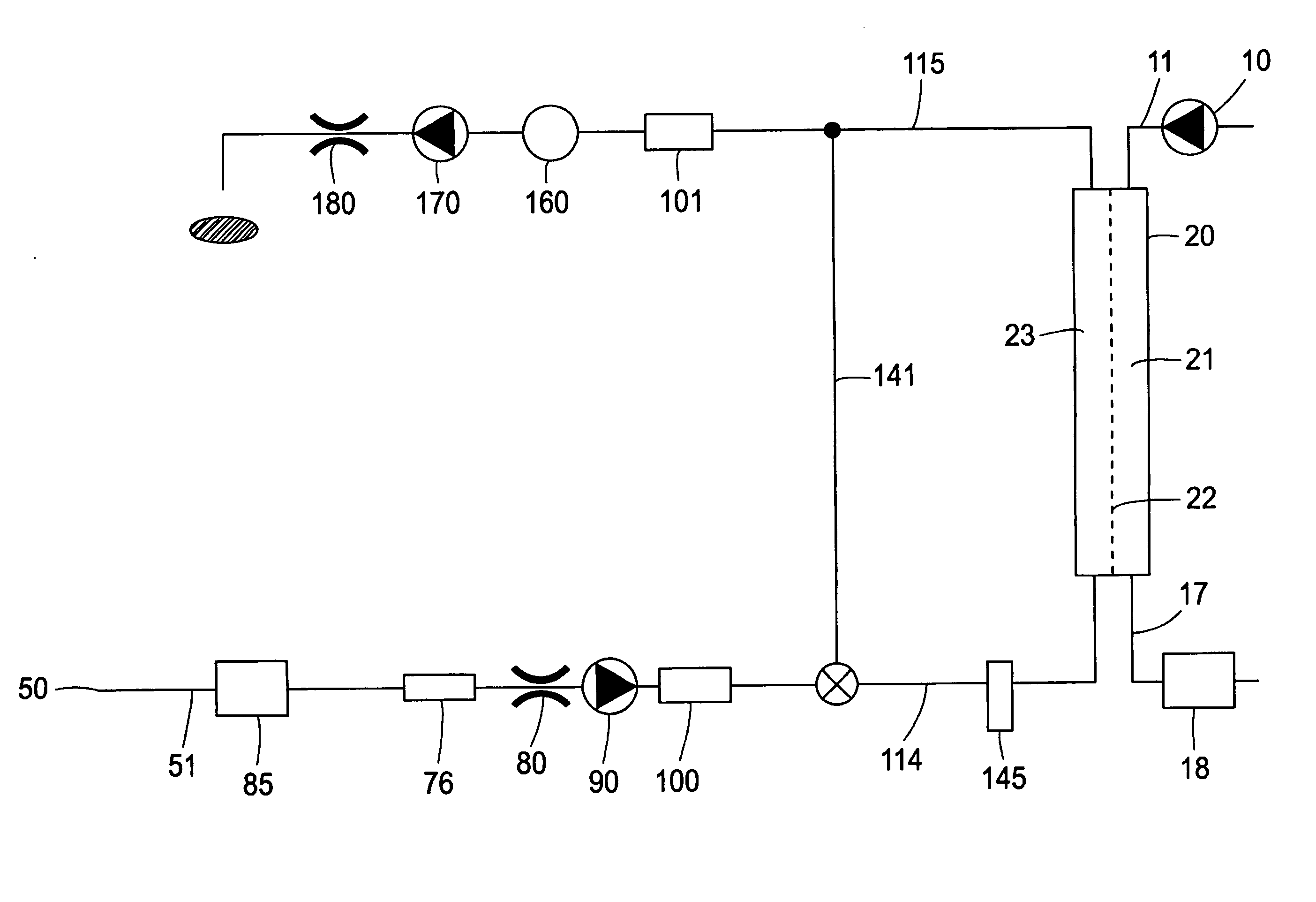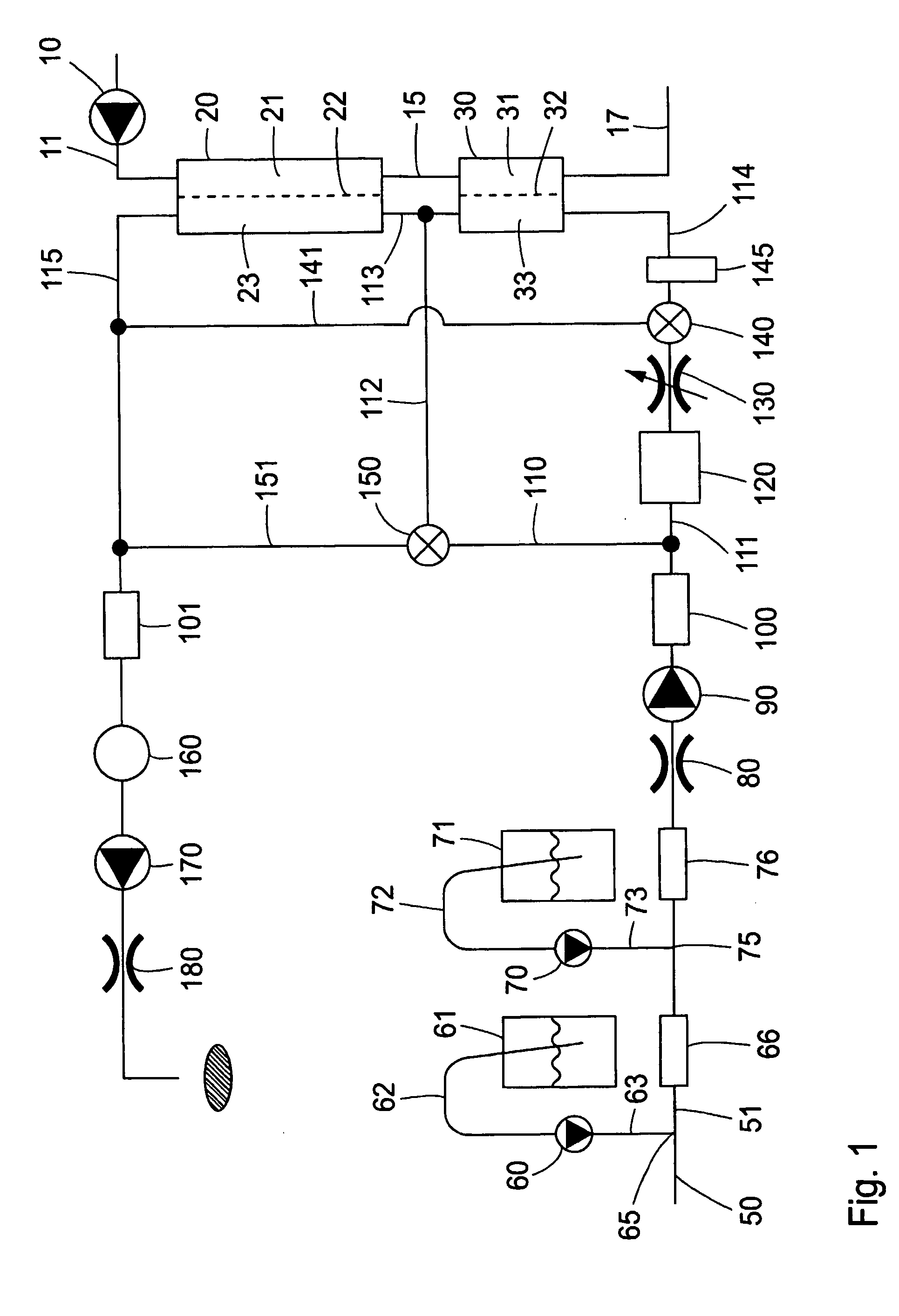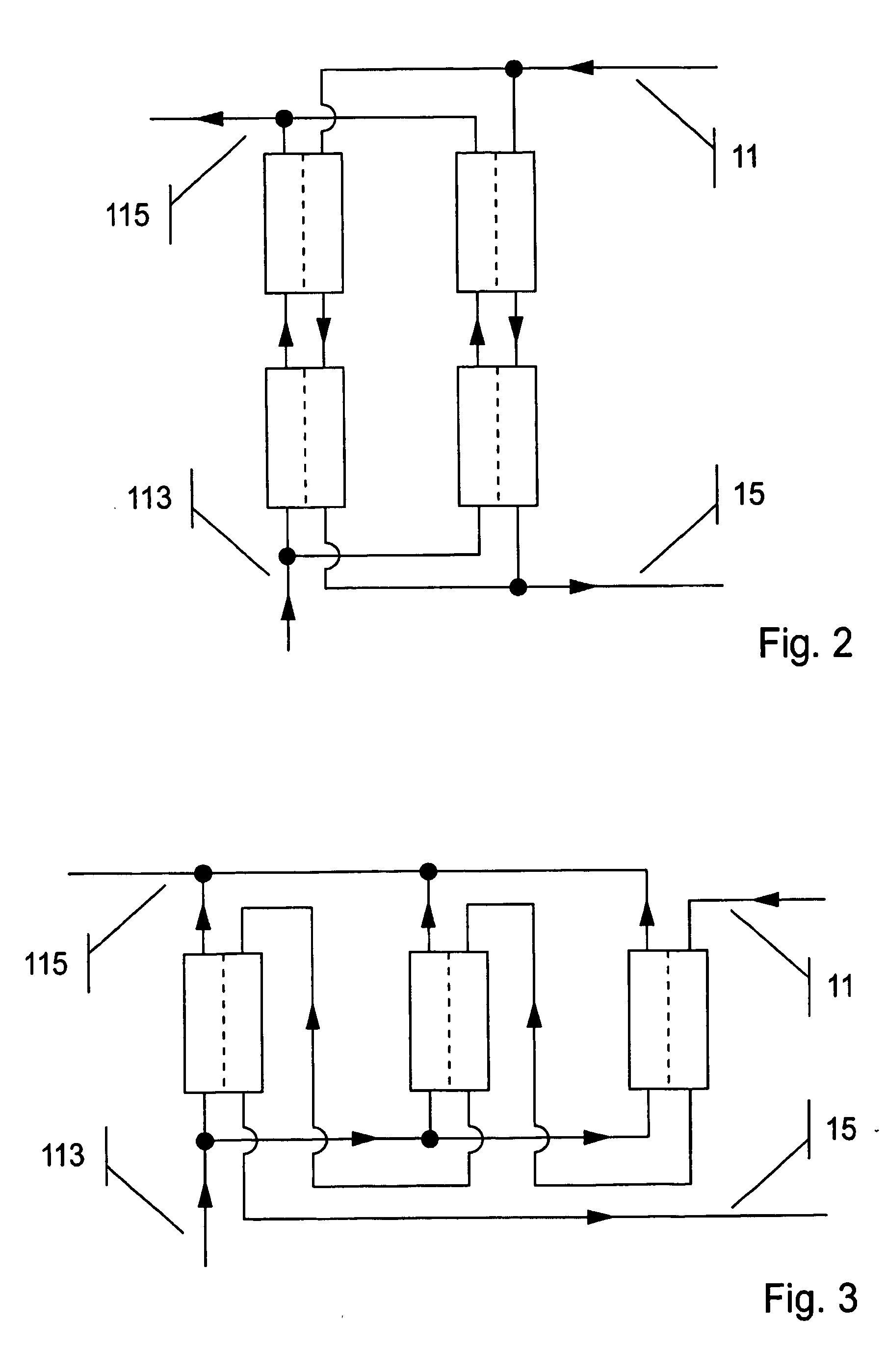Method and device for the removal of partially protein bound substances
- Summary
- Abstract
- Description
- Claims
- Application Information
AI Technical Summary
Benefits of technology
Problems solved by technology
Method used
Image
Examples
Embodiment Construction
[0047] A first embodiment of the invention is shown in FIG. 1, which schematically shows a system with a close resemblance to a standard system for hemodialysis. Blood is transported with the help of a pump 10 from the patient via an arterial blood line 11 through the blood compartment 21 of a large dialyzer 20, and then via blood line 15 into the blood compartment 31 of a smaller dialyzer 30. It is then returned to the patient via blood line 17. Semipermeable membranes 22 and 32 in dialyzers 20 and 30, respectively, separate the blood compartments 21 and 31, respectively, from the dialysate compartments 23 and 33, respectively.
[0048] The pore size of the semipermeable membranes 22 and 32 should be chosen large enough to allow the passage of the toxins that are to be removed, the size of which in some cases are several thousand Daltons. The membranes should, on the other hand, effectively prevent the passage of carriers such as albumin, which has a size of about 66000 Daltons. Thes...
PUM
| Property | Measurement | Unit |
|---|---|---|
| Fraction | aaaaa | aaaaa |
| Fraction | aaaaa | aaaaa |
| Flow rate | aaaaa | aaaaa |
Abstract
Description
Claims
Application Information
 Login to View More
Login to View More - R&D
- Intellectual Property
- Life Sciences
- Materials
- Tech Scout
- Unparalleled Data Quality
- Higher Quality Content
- 60% Fewer Hallucinations
Browse by: Latest US Patents, China's latest patents, Technical Efficacy Thesaurus, Application Domain, Technology Topic, Popular Technical Reports.
© 2025 PatSnap. All rights reserved.Legal|Privacy policy|Modern Slavery Act Transparency Statement|Sitemap|About US| Contact US: help@patsnap.com



